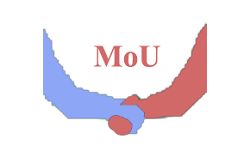Solar Wind Energy Tower, Inc. (SWET) entered into a MoU with Elperta Industries Co. Ltd. out of Kenya. SWET is the inventor of large Solar Wind Downdraft Tower structures.
Under the MoU, SWET will pursue the finance and development of its thermal downdraft towers facilities in the East African country.
Elperta is able to finance, construct, and place in operation such tower facilities, subject to obtaining necessary consents and approvals and other pre-development activity. Moreover, the developer has already identified potential suitable sites as well as offtake customers in the region.
The agreement sets forth specific terms for SWET to receive development fees and royalties from tower project(s) in Kenya, while allowing Elperta a six month exclusivity period to fully evaluate and vet a specific site identified for the first tower facility. Each facility is estimated to have an installed capacity rating of up to 1,250 MW.
Ron Pickett, CEO of SWET, commented, “The company has been in discussions with Elperta and two other potential developers since last fall — focused on the Lake Turkana region of Kenya, an area the Kenyan government has targeted for energy projects. We have evaluated this site and deemed it adequate to support a tower project. East Africa needs energy to develop its resources. International organizations and banks are committed to assisting African nations to develop infrastructure projects and energy development is essential.”
He continued, “Elperta was ultimately chosen as our development partner given their strong track record, identified potential customer pipeline and ties to various financing opportunities. Upon the completion of strategic development milestones, SWET and Elperta may enter into a long-term agreement where they will have exclusive use of all of our technology, patents, trade secrets, and development know-how, together with technical support, project management and long-term operations and maintenance services to ensure the successful development and utilization of tower facilities in the region.”

